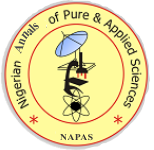Aloe Vera (Aloe barbadensis Miller) Extract as a Natural Antimicrobial Agent in Hand-Washing Liquid Soap
DOI:
Keywords:
microorganisms, antimicrobial agents, cosmetics, saponification, soapAbstract
Synthetic antimicrobial agents, like triclosan, used in many cosmetics are now associated with serious health problems, beginning with skin irritation to cancer. This calls for alternative antimicrobial agents. Many plant extracts have the potential to inhibit the growth of microorganisms and perhaps kill them and thus can serve as alternative antimicrobial agents in cosmetic formulations. To demonstrate this, a hand-washing liquid soap was prepared in the presence of varying concentrations of aloe vera extract and tested in-vitro against common skin microbes. First, a liquid soap paste was prepared by saponifying a vegetable oil blend containing olive oil (80.0 %w/w), coconut oil (14.3 %w/w) and castor oil (5.7 %w/w) with aqueous KOH solution (22.5 %w/w) at a relatively high temperature (200 °C). Second, the soap paste was diluted with distilled water in the presence of varying concentrations (0 to 66.67 %w/w) of aloe vera extract to obtain hand-washing liquid soap samples, with the extract acting as an antimicrobial agent. Third, the liquid soap solutions were characterised in terms of foaming, wetting and cleansing abilities and the ability to inhibit the growth of Staphylococcus aureus, Pseudomonas aeruginosa and the fungus Aspergillus flavus. These were compared with those of a commercial (Astonish) hand-washing liquid soap sample containing triclosan (0.1 %w/w) as an antimicrobial agent. The liquid soap solutions exhibited excellent foaming, wetting and cleansing abilities, similar to the commercial liquid soap solution. In addition, the liquid soap solutions gave an average zone of inhibition between 9.0±0.3 mm and 11.0±0.2 mm for S. aureus, 7.0±0.1 mm and 10.0±0.2 mmfor P. aeruginosa and also inhibited the growth of the fungus A. flavus. These results compare favourably ( p= 0.05)with the commercial liquid soap solution, which gave an average inhibition zone of 9.00±1 mmfor both bacteria and also inhibited the growth of the fungus. This indicates that aloe vera extract can be used as an antimicrobial agent in the formulation of antimicrobial hand-washing liquid soap and other related products, rather than synthetic agents which are inherently harmful.



 Contact Us
Contact Us Editorial Team
Editorial Team Join As A Reviewer
Join As A Reviewer  Request For Print Copy
Request For Print Copy


 Cprint Publishers
Cprint Publishers